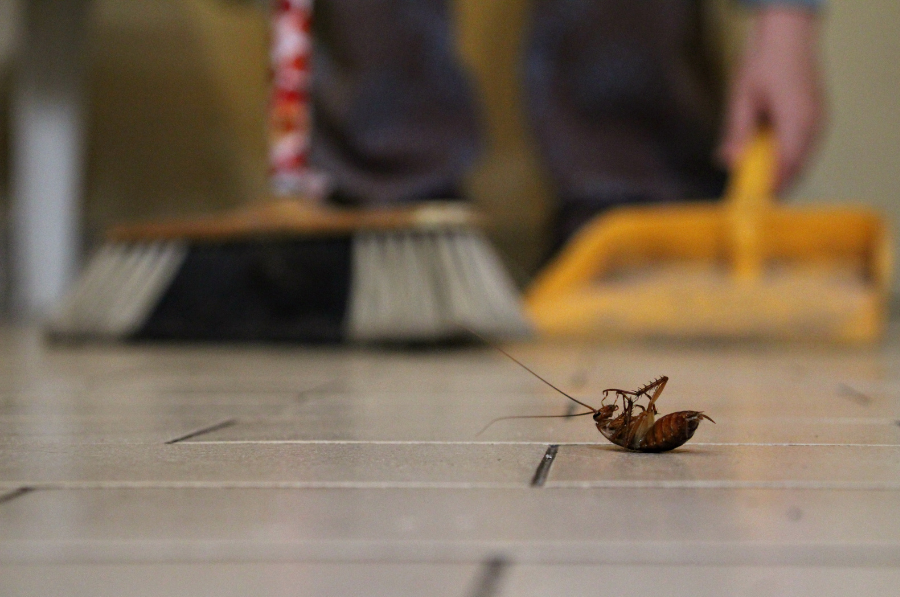What are the Most Common Bugs Found in Basements?
Basements serve as vital extensions of our homes, offering additional space for storage, recreation, or utility purposes. However, the subterranean nature of basements also makes them susceptible to various pest infestations. Effective pest control becomes imperative to safeguard both the structural integrity of your home and the health of its occupants. In this article, we’ll explore the most common bugs found in basements and delve into strategies for prevention and control to get pest control.
Common Bugs Found in Basements
A. Silverfish
Silverfish, with their elongated bodies and silvery scales, are frequent inhabitants of damp, dark spaces like basements. These nocturnal creatures thrive in humid environments, feeding on starchy substances found in paper, glue, and textiles. Signs of their presence include shredded paper, yellow stains, and tiny feces resembling black pepper. To mitigate silverfish infestations, reducing moisture levels through dehumidifiers and proper ventilation is essential. Additionally, sealing cracks and crevices can restrict their movement, while decluttering minimizes potential hiding spots.
B. Cockroaches
Cockroaches, notorious for their resilience and adaptability, often infiltrate basements in search of food, water, and shelter. These scavengers contaminate surfaces with bacteria and allergens, posing health risks to humans. Common indicators of cockroach activity include foul odors, fecal droppings, and shed exoskeletons. Eradication efforts typically involve sanitation practices, such as eliminating food debris and sealing garbage bins. Furthermore, sealing entry points and applying insecticidal treatments can help prevent cockroach reinfestations.
C. Spiders
While many spiders are harmless and even beneficial for pest control, certain species can become nuisances when they overrun basement areas. Cellar spiders, also known as daddy longlegs, and house spiders are among the most frequently encountered arachnids in basements. Their presence may be detected through cobwebs, egg sacs, or sightings of the spiders themselves. Implementing measures like vacuuming webs regularly and sealing cracks in walls can deter spiders from establishing populations indoors.
Factors Contributing to Bug Infestations in Basements
A. Moisture
Moisture serves as a primary attractant for various bugs, creating favorable conditions for their proliferation. Leaky pipes, inadequate ventilation, and high humidity levels contribute to the damp environment that many pests, including silverfish and cockroaches, find conducive to survival. Installing dehumidifiers, fixing plumbing leaks promptly, and ensuring proper drainage away from the foundation are effective strategies for reducing moisture in basements.
B. Clutter
Clutter not only provides hiding spots for bugs but also impedes thorough cleaning efforts, allowing infestations to go unnoticed until they become severe. Boxes, stacks of newspapers, and neglected items offer ideal harborage for pests seeking shelter and protection. Organizational practices like regular decluttering, storing items in sealed containers, and maintaining cleanliness facilitate bug prevention and early detection.
C. Cracks and Crevices
Structural vulnerabilities, such as cracks in walls or gaps around utility conduits, serve as entry points for pests infiltrating basements. Rodents, insects, and arachnids exploit these openings to gain access to indoor environments, where they can establish nests and forage for food. Sealing gaps with caulk or weatherstripping and repairing damaged screens or vents fortifies the perimeter against pest intrusion.
Importance of Timely Detection and Action
A. Health Risks
Bug infestations in basements pose significant health risks to occupants, exacerbating allergies and respiratory conditions through the dissemination of allergens and pathogens. Cockroaches, for instance, are notorious carriers of disease-causing bacteria like Salmonella and E. coli, while spider bites can trigger allergic reactions in susceptible individuals. Prompt identification and intervention are crucial for mitigating these health hazards.
B. Structural Damage
Prolonged bug presence can compromise the structural integrity of buildings, particularly in the case of wood-destroying pests like termites and carpenter ants. These insects tunnel through wooden structures, causing structural weakening and potential collapse if left unchecked. Regular inspections by pest control professionals can detect early signs of infestation and prevent extensive damage to the property.
C. Financial Consequences
Bug infestations entail financial ramifications beyond the cost of pest control treatments, encompassing repairs to damaged property and replacement of contaminated belongings. Moreover, decreased property value resulting from unresolved pest issues may hinder resale opportunities and necessitate extensive renovations to restore market appeal. Investing in proactive pest management measures ultimately mitigates these financial burdens.
Strategies for Bug Prevention and Control in Basements
A. Regular Cleaning and Maintenance
Routine cleaning routines, including vacuuming, sweeping, and dusting, play a pivotal role in bug prevention by eliminating food sources and reducing clutter. Paying particular attention to areas prone to moisture buildup, such as around sinks and appliances, helps deter pests attracted to damp environments. Additionally, promptly addressing spills and crumbs minimizes the risk of attracting insects like ants and cockroaches.
B. Sealing Entry Points
Thoroughly inspecting the perimeter of the basement for potential entry points and sealing gaps with caulking or weatherstripping prevents bugs from infiltrating indoor spaces. Windows, doors, utility penetrations, and foundation cracks are common areas of vulnerability that warrant attention.



Post Comment